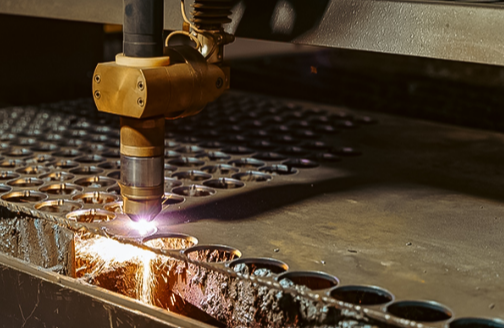Revolutionising Metalwork with CNC Plasma Cutting Table Technology
Metal fabrication, an essential process in the construction and manufacturing sector, has evolved significantly over the years. Today’s industry has seen a revolution with the integration of modern technology such as the CNC plasma cutting table, which has significantly enhanced the efficiency, precision, and speed of metalworking tasks. This innovative equipment has become a staple in workshops and manufacturing facilities, redefining the standards of cutting metal sheets and components.
The Advancements in Metal Fabrication
Historically, metal fabrication involved manual labour, intense craftsmanship, and a high degree of skill. While these characteristics are still valued, the advent of computer numerically controlled (CNC) technology has brought about a dramatic shift in productivity and accuracy. The CNC plasma cutting table, in particular, exemplifies this technological progress, turning complex designs into reality with unmatched precision.
The Essentials of CNC Plasma Cutting
A CNC plasma cutting table utilises the power of a plasma torch coupled with computerised guidance to cut through conductive metals, including stainless steel, aluminium, and brass. The process involves ionising gas that is focused into a high-speed stream and directed at the metal, achieving temperatures that can effortlessly melt through the material. This is enhanced by the computer’s control, which follows a pre-defined path generated from a digital design file, ensuring the utmost precision in every cut.
The Significance of Precision and Efficiency
The precise nature of the CNC plasma cutting table ensures that every piece produced is consistent and accurate to the original design specifications. This level of accuracy is vital in sectors where precision can mean the difference between success and failure, such as in aerospace and automotive manufacturing. Furthermore, the speed at which CNC plasma cutting tables operate vastly reduces production times, allowing for a swifter turnaround and enabling higher productivity rates.
Reducing Waste and Improving Safety
An additional advantage offered by CNC plasma cutting tables is the reduction in material waste. Because the cutting is so precise, it allows for a more efficient use of materials, reducing the scrap generated during the cutting process. This aspect of operation not only saves on resources but also benefits the environment by minimising waste. Additionally, the automated nature of the machine means there’s less direct contact with the metal being cut, emphasising improved safety conditions for operators.
Customisation and Flexibility in Design
Beyond precision and efficiency, the versatility of CNC plasma tables aids in customisation. These machines can handle intricate cuts and elaborate patterns that would be exceedingly difficult, if not impossible, to achieve manually. This aspect is particularly beneficial for industries requiring custom solutions, such as bespoke machinery builders or creative architectural metalwork.
Upgrading Workflows with CNC Plasma Cutting Tables
Workflows within the metal fabrication industry face a radical upgrade with the integration of a CNC plasma cutting table. This machinery seamlessly fits into the digital design and manufacturing pipeline, allowing for a consistent and error-free transfer of design data directly from CAD programs to the cutting table. This reduces the potential for human error and streamlines the transition from design to production.
Investing in CNC Plasma Technology
For businesses looking to remain competitive and on the cutting edge of fabrication technology, investing in a CNC plasma cutting table is a forward-thinking decision. The initial investment can be offset by the reduction in wasted materials, lower labour costs due to increased automation, and greater consistency in product quality. This can result in a significant return on investment over time, not just in monetary terms but also in reputation and client satisfaction.
The Future of Metal Fabrication
The future of metal fabrication appears highly intertwined with technological advancements such as the CNC plasma cutting table. As software becomes more sophisticated and the machines more powerful, the capabilities of what can be achieved in metalworking will continue to grow. We are likely to witness even more intricate designs and complex structures being produced with increasing efficiency as the technology progresses.
The Role of Suppliers in Advancing Technology
Key to the dissemination and adoption of this technology are suppliers that not only provide the equipment but also offer ongoing support and expertise. Providers such as those found at Macro Supply are instrumental in maintaining the momentum of advancement by ensuring that businesses have access to the latest and most effective fabrication tools. Purchasing from reputable suppliers ensures reliability, support, and access to the latest updates and improvements in the technology.
Conclusion
The role of CNC plasma cutting tables in revolutionising metalwork cannot be overstated. Their capabilities transform what was once a laborious and time-consuming process into one that is efficient, precise, and innovative. As the demands on the metal fabrication industry continue to evolve, the CNC plasma cutting table stands as a testament to the transformative power of technology. It is a pivotal moment for the industry to embrace these advancements and continue to push the boundaries of what is possible in metal fabrication.
As CNC plasma cutting becomes a mainstay in workshops globally, the benefits it brings to the table—optimisation of workflow, reduction in waste, and provision of safer work environments—make it an invaluable asset. For anyone involved in metalworking, understanding and harnessing the power of a CNC plasma cutting table is not just a modern convenience; it is an essential component in driving the future success of the industry.






